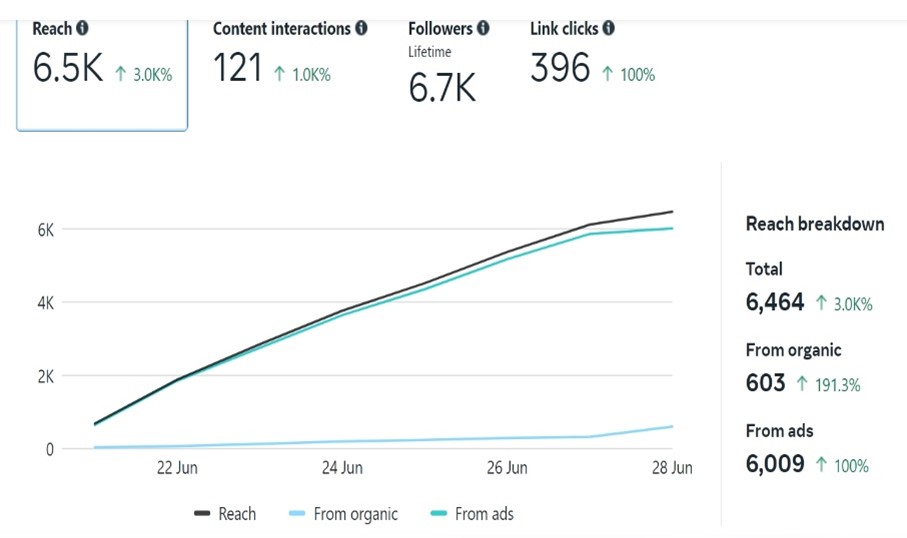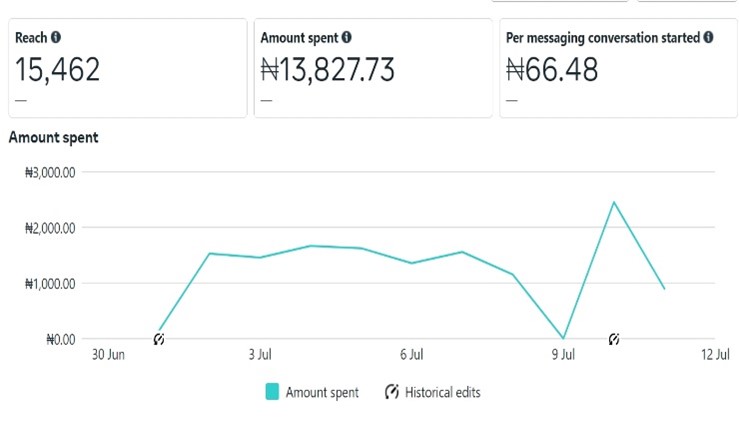Picture this: A seed company pouring its resources into traditional media—TV, radio, and print media, convinced that these channels reach thousands every day. Despite the substantial advertising costs and some inquiries, many potential customers from this channel hesitate to make a purchase. The company quickly realizes that its interactions with these audiences are limited, and diversifying its content pool is a financial burden.
As they struggle to measure the effectiveness of their campaigns, calculating return on investment (ROI) feels like navigating a maze of assumptions and guesswork, leaving them guessing the value of their spending. Frustrated by the inefficiencies, they begin to wonder if they are correctly allocating their resources.
On the flip side, in search of alternative channels, the company turns to social media. They soon recognize that you can reach new and interested audiences and engage with them in real time. This not only proves to be a cost-effective marketing strategy but also fosters knowledge sharing, increased sales, and scalability. However, they soon discover that leveraging social media effectively demands dedication and creativity to truly reap the rewards.
In exploring the effectiveness of social media marketing for seeds, the seed company marketing and promotion (SCMP) topic under the collaborative seed programme (CSP), conducted social media campaigns for ten different seed companies, revealing a range of results that highlight the uniqueness of selling seeds in this digital age. Here we show results and look at two contrasting cases illustrating that while effective marketing can drive sales, the approach taken can influence outcomes.
Introducing company A: A model of success – Company A exemplifies effective social media marketing for seed companies in Nigeria. By prioritizing engagement and gaining customers’ trust, the company’s strategy includes precise demographic targeting, seasonal marketing, influencer partnerships, timely responsiveness, AI-powered personalized messaging, and eye-catching visuals. In just 8 days (June 21-28, 2024), the company achieved a remarkable reach of 6,153 while spending only ₦10,626.84 ($6.07 as of November 21st,2024) (an average of ₦70 per click), demonstrating its cost-effectiveness. The campaign generated ₦7,094,424 ($4,053.96 as of November 21st, 2924) in sales which can be directly attributed to the campaign, showcasing the company’s ability to drive sales conversions through social media.
The images below demonstrate the comparison between the state of the company page (from the period of January up until the campaign in June) before promotions for the wet planting season (on the left) and after 8 days of the advert (on the right). The reach recorded a 1224.24% increase (from 2900 to 6500). Also, the content interactions doubled by 101.7% indicating the content appealed to the campaign reach. Although there was no increase in the page following, it only indicates the need for content consistency to convert interested audiences to followers. Before the campaign, the company had not explored the option of linking other social media like Whatsapp to their Facebook page, with 396 clicks on the advert link, the company recognized the importance of this as it offers a more efficient interaction and a platform to display their product catalogue.


Images: Company’s performance before the campaign(top) and after the campaign (bottom). Source: Sahel Consulting, 2024.
Key takeaways from Company A – Company A is a case that shows that you can make sales on social media by deploying good marketing and engagement strategies for your sales. Here are lessons to learn
Wider and faster reach: In just 8 days, the campaign reached 6.1k people. It expanded the company’s reach into 5 new locations, highlighting the potential for market entry in these hitherto unknown customer locations.
Customer engagement: The company prioritized engagement with leads, maintaining strong follow-up even after purchases to ensure customer satisfaction and loyalty.
Strategic campaign timing: By considering the seasonality of farming input demand, the campaign was launched at an optimal time, aligning with consumer demand trends.
Targeted advertising: Targeted ads were used to reach the most relevant audience using the audience’s interests and geographical compatibility with the crops advertised, increasing conversion rates and enhancing return on investment.
Influencer collaborations: Influencer marketing was strategically used to build trust and persuade potential customers, especially those hesitant about the purchase.
Availability of Stock: The company ensured that all products were readily available, preventing potential sales losses due to stock shortages.
Social media can be a great platform for seed sales, but it’s important to avoid common pitfalls. Let’s take a look at Company B to learn from their missteps and ensure your online marketing efforts achieve the set goal.
Take a look at Company B: We can learn from its results.

Results from Company B campaign, 2024. Source: Sahel Consulting, 2024.
Company B’s campaign ran from July 1st to 11th, 2024, reaching an impressive 15,462 users across 38 locations. Despite spending ₦13,828.11 (an average of ₦66.16 per click) and generating 205 messaging conversations, the campaign failed to generate a single sale. Despite visually compelling offers and impressive reach, the campaign’s low conversion rate can be attributed to strategic missteps. Broad targeting likely diluted reach, targeting users uninterested in seeds. Additionally, the campaign’s timing may have missed the optimal planting season ( May/June to October for the wet planting season), as farmers had likely secured their seed needs.
Key lessons from Company B – The experience of Company B serves several lessons about what not to do in social media marketing:
Neglecting engagement: The company’s lack of dedicated social media personnel hindered effective engagement. Responding to comments, asking questions, and fostering discussions are crucial for building relationships and driving conversions.
Broad targeting: Targeting 38 locations without audience segmentation diluted the reach and missed conversion opportunities. Tailored messaging to specific demographics would have been more effective.
Dedicated brand page: A consistent brand presence is essential for influencing customer decisions. A dedicated ads page with real-life content helps build trust and credibility.
Out-of-season marketing: Launching ad campaigns before targeted seasons can capitalize on seasonal demand and increase conversions.
What else do you need to know? Cultivating a committed and dedicated mindset is essential. Maintaining thorough records and analyzing campaign data and feedback will support your efforts. Additionally, you can explore the strengths of both traditional and social media and combine them to get the best of both worlds.
Neglecting follow-up: Neglecting lead follow-up is a missed opportunity. Persistent, persuasive marketing over time can convert leads into customer.
Point of view: the customer experience. We interviewed 9 customers who purchased seeds from the recent campaign. Their responses centered around key metrics: convenience, trust issues, seed prices, delivery method, response time, and satisfaction with the results. Here’s a summary of their thoughts:
- Convenience: Customers expressed that the purchasing process was straightforward and user-friendly, they could be on-farm and place orders from anywhere. 80% of customers rated the convenience of the purchasing process as “excellent” or “good”, while 20% rated it as “okay.”
- Trust issues: 60% of customers expressed concerns about the credibility of the seed quality and requested more information about its genuineness. They emphasized the importance of seed codex on the seed packaging and reliable reviews.
- Seed pricing: Opinions on seed pricing varied. While some customers felt the prices were fair given the quality, others believed they could be more competitive. 60% of customers felt that seed prices were higher than expected, while 40% found them reasonable.
- Delivery method: Customers appreciated the fast-shipping options but mentioned some concerns with the extra cost of delivery, inaccurate communication with the delivery personnel, far distances and security concerns in certain locations.
- Response time: Feedback on customer service response times varied. Some customers received prompt assistance, while others experienced delays. 40% reported quick responses, while 60% felt the response time was too slow.
- Satisfaction with results: Overall, customers were pleased with the outcomes of their purchases, noting good germination rates and healthy plants. However, some desired more guidance on growing practices. 80% of customers rated their satisfaction with the results as “very satisfied.”
As the contrasting real-world examples highlight, social media is not merely an option; it is a game changer for seed marketing if done right. Companies can unlock growth opportunities and reap rewards by prioritizing the best practices and avoiding common pitfalls to leverage their unique strengths. Embracing this shift will position seed businesses to flourish in an increasingly competitive environment, improve the seed industry, and improve food security by increasing farmers’ access




